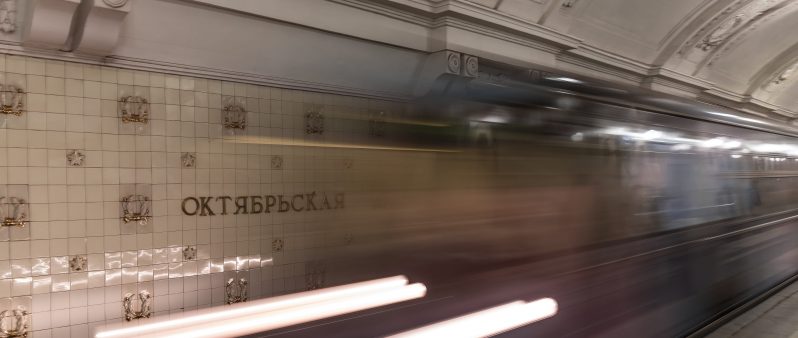
So, you’ve decided to go to Moscow. Even as a tourist, it is next to impossible to get around without learning how to speak Russian — at least a little!
Public transportation is very accessible, with many options, but sometimes station names will be written only in Cyrillic and announcements are usually not made in English. However, once you learn to recognize some station names, you will find they are easy to remember. Most are named after important people or places, like the station Biblioteka imeni Lenina, named for the Russian State Library nearby (which used to be named after Lenin), or events, like Oktabrskaya, named after the October revolution. In fact, once you learn to navigate the Moscow Metro (English site is available), you may even find yourself spending a day just riding around to all the stations!
That isn’t as unlikely an idea as it may sound. The Moscow subway, constructed under Stalin, is famous for its stunning Soviet architecture and design. Each station is distinct and represents Soviet values, ideals, and triumphs. Gold-embossed frames around mosaics of important people, rich marble pillars, intricate tilework, candelabras, statues: everything is made on a grand scale, with intent to impress. Stations in otherwise unremarkable places become tourist attractions in and of themselves.
How to navigate the Moscow metro system (even if you don’t know how to speak Russian)
It is relatively easy to navigate inside the stations. Maps are easy to find and read. Arrows and color-coding will ensure that you are walking towards the correct track in the correct direction—some stations can wind around seemingly endlessly, with numerous staircases and hallways. A common sight along the hallways is old beggar women who stand silently, heads wrapped in scarves and bowed in supplication, holding out containers for spare change. Why are they always old women? This, I never figured out.
The layout of the Moscow subway is logical, with 10 color-coded, numbered lines connected by a ring line. The lines all have names, but it is much easier to refer to them by color or number—even for someone who knows how to speak Russian, ‘Sokolnicheskya Line’ is harder to remember than ‘Number 1’ or ‘Red Line’.
Other public transportation options in Moscow
There are also above-ground streetcar, tram, and bus lines. The most noteworthy of these are the marshrutki, which are small vans that run along a predetermined route. There is usually a sign in the window that gives the route number and some vague stops, but they will stop anywhere you ask them to along the way. There are no tickets, you just pay the driver when you get in. Marshrutki are trickier than other forms of transit; if you don’t know the area or how to ask the driver to stop, you may find yourself lost. But they are certainly a fun and authentic way to get around the city.
Of course, if it is late or if you are too tired to navigate public transit, there is always a ‘taksi.’ Say it out loud … Yes! Taxi. While the word is similar to ours, the system is different. When you’re wandering the streets of Moscow at night, especially if you’re in a group of college-aged girls, you will be constantly assaulted with calls of “Taksi? Taksi?” People who aren’t even near a car will ask you if you need a taxi if you look like you’re going somewhere. Should you accept, you’ll literally just be jumping into some random guy’s car. As an American, this scenario screams “stranger danger” and seems like the beginning of a bad crime thriller. But, in Moscow, it’s a perfectly legitimate way of getting around that is cheaper, faster, and less likely to rip you off than the licensed taxis you can call. Just be sure to negotiate your fare before you get in. Since the subways stop running at midnight and don’t start again until 5AM, you may find yourself making use of this method—unless, of course, you plan to take an example from hip young Russians and party until dawn and the first train.
No Comments for "Getting Around Moscow While Learning How to Speak Russian"